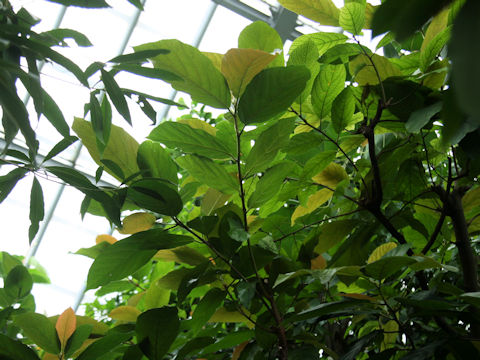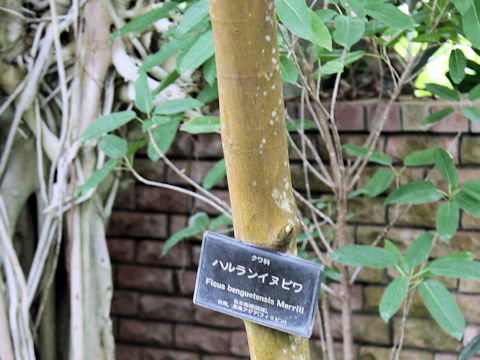|
|
|
|
[Index]
[Back] |
    |
|
|
|
íªÌì¼Aüå©ç^ßAäp»êÉtBsɪzµÄ¢Ü·Bán©çRnÌJ¢Ì÷Ñàɶ¦A³ÍPT[gÙÇÉÈèÜ·B²Í¼§µÄA÷çÍÔFðµÄ¢Ü·BtÍÈ~`©ç·È~`ÅA·³RZ`ÙÇÌt¿ªÂ«Ü·BYÙÅ·BÊÀÍ `ÅAtãüâ²É½Â¢Ä¼PT`QO~AòÔFÉnµÜ·Ba¼ÍAVtªÔÈé±Æ©çBʼÅun¢ÊÑíin¢øfjvÆ©u±¤Æ¤¢ÊÑíigª¢øfjvÆàÄÎêÜ·B±Ì¤¿unvÍAVmjÌí¬¼©çAܽu±¤Æ¤vÍäpÌ×ÌüÉöÝÜ·BäpØêÅÍu黃Ê豬êûvÆÄÎêÜ·B |
|
|
NÈC`WN®ÌtØÅAw¼Í Ficus benguetensis (syn. Ficus harlandii var. kotoensis)Bp¼Í èܹñB |
|
|
The "Akame-inu-buwa" (Ficus benguetensis) belongs to Moraceae (the Mulberry family). It is a tall deciduous tree that is distributed in the Nansei Islands of Japan, from Amami Oshima to Yonaguni Island, Taiwan and the Philippines. It grows in forests along valleys in lowland and mountainous areas, and can reach a height of around 15 m. The trunk is upright and the bark is reddish brown. The leaves are elliptic to oblong, with a petiole around 3 cm long. It is dioecious. The fruit is ovoid, and many of them grow on the leaf axils and trunk, ripening to 15-20mm in length and orange-red in color. The Japanese name comes from the fact that the new leaves turn red. It is also called "Haruran-inu-biwa" or "Koto-inu-biwa". The name "haruran" comes from the specific epithet "harlandii" of its synonym, and the name "koto" comes from the old name of Taiwan's Lanyu Island. In Taiwanese Chinese, it is called "黃Ê豬êû". |
|
|
xRsw¬uxR§A¨vÉÄA2025N0321úBeBp¼Í èܹñB |
|
|
|
Shu Suehiro |